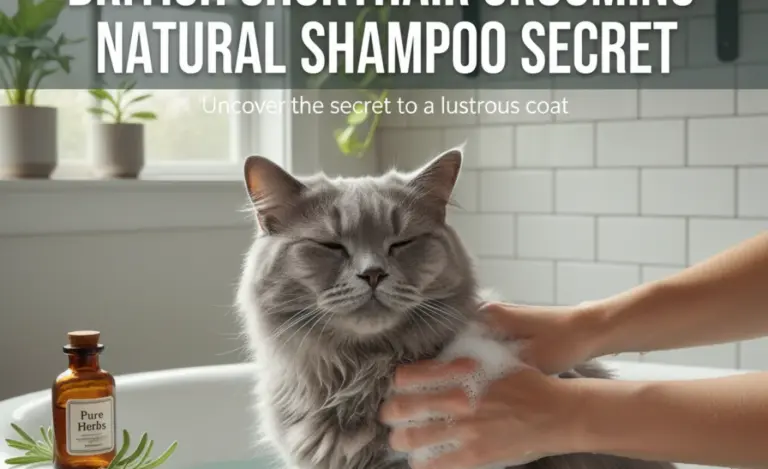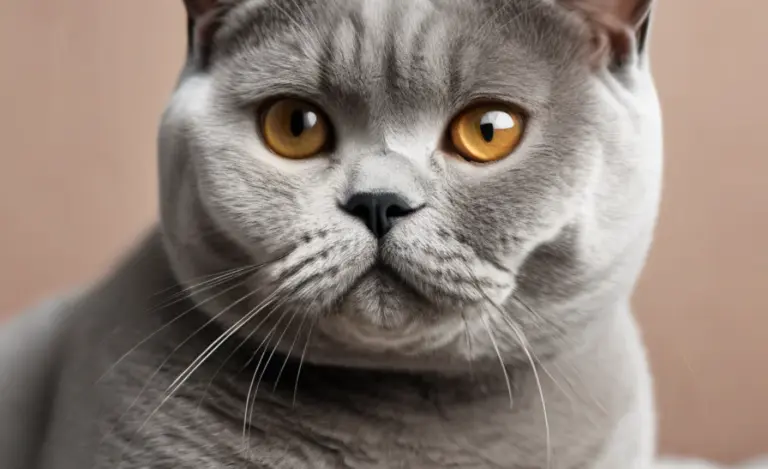Grooming Kits for British Shorthairs: Ultimate Guide
Grooming kits for British Shorthairs should include a quality slicker brush, a metal comb, nail clippers, and a soft cloth for wiping their face. Occasional additions can be a de-shedding tool and cat shampoo for the rare bath. Regular grooming (2-3 times a week) keeps their coat healthy and reduces shedding.
Bringing a British Shorthair into your life is such a joy. Their plush coats and sweet personalities make them wonderful companions. But that beautiful fur needs regular care to stay healthy and prevent mats. Many owners feel overwhelmed when they first think about grooming. Where do you start? What tools do you really need?
Don’t worry! Grooming your British Shorthair can be a relaxing bonding experience for both of you. In this guide, I’ll walk you through exactly what you need in your grooming kit, step-by-step, so you can keep your kitty looking and feeling their best. We’ll cover essential tools, how often to use them, and some helpful tips to make grooming a breeze.
What to Include in Your British Shorthair Grooming Kit
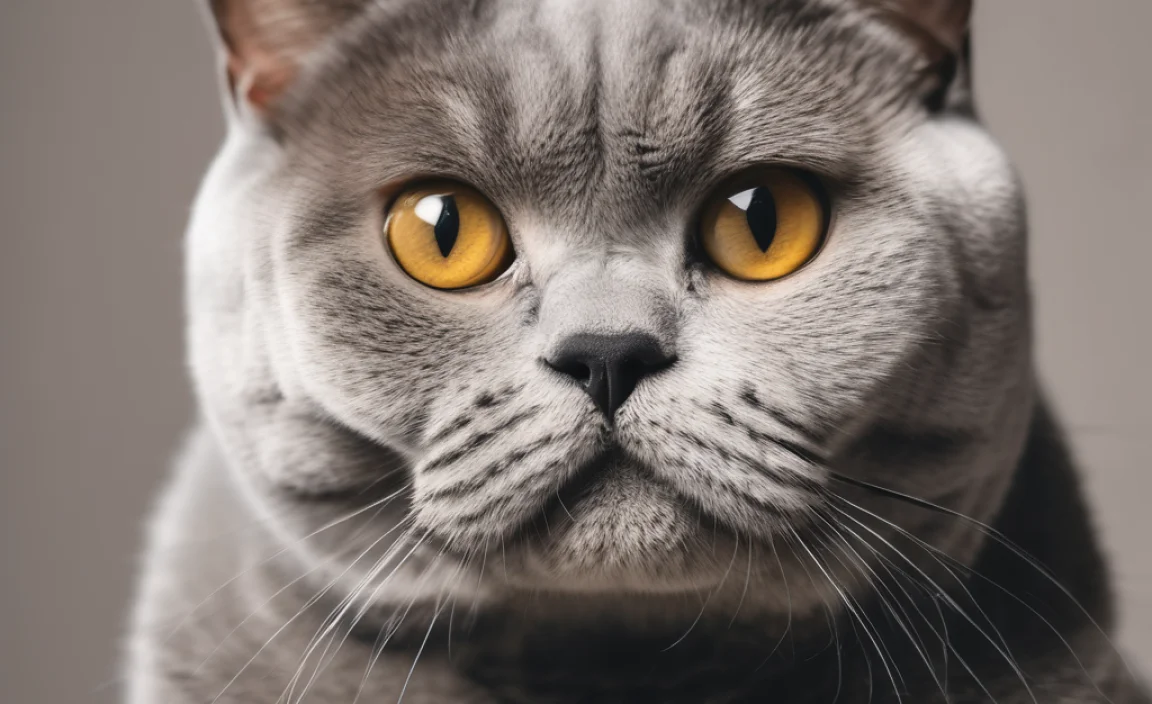
A well-equipped grooming kit doesn’t have to be expensive or complicated. The key is to have the right tools on hand and know how to use them. Here’s a breakdown of the essentials:
1. Slicker Brush
A slicker brush is a must-have for any British Shorthair owner. These brushes have fine, angled wires that gently remove loose fur and help prevent mats. Look for one with coated tips to avoid scratching your cat’s skin.
- Benefits: Removes loose fur, prevents mats, and stimulates blood circulation for a healthy coat.
- How to use: Gently brush your cat in the direction of hair growth. Pay special attention to areas prone to matting, such as behind the ears and under the legs.
2. Metal Comb
A metal comb is perfect for detangling knots and removing any remaining loose fur after brushing with the slicker brush. Choose a comb with both wide and narrow teeth to handle different types of tangles.
- Benefits: Detangles knots, removes loose fur, and helps to distribute natural oils throughout the coat.
- How to use: Gently comb through your cat’s fur, starting at the head and working your way down to the tail. Be extra careful when dealing with tangles – work them out slowly and gently to avoid pulling or hurting your cat.
3. Nail Clippers
Regular nail trimming is essential for your British Shorthair’s health and well-being. Overgrown nails can be uncomfortable and can even lead to injury. There are two main types of nail clippers: scissor-style and guillotine-style. Choose whichever you feel most comfortable using.
- Benefits: Prevents overgrown nails, reduces the risk of scratching furniture or people, and improves your cat’s comfort.
- How to use: Gently hold your cat’s paw and extend one nail at a time. Clip only the tip of the nail, avoiding the quick (the pink part of the nail that contains blood vessels and nerves). If you’re unsure, it’s always best to clip less rather than more.
4. Soft Cloth
A soft, damp cloth is perfect for gently wiping your British Shorthair’s face and cleaning around their eyes. This helps to remove any dirt or debris and prevent tear stains.
- Benefits: Cleans the face, removes dirt and debris, and prevents tear stains.
- How to use: Gently wipe your cat’s face with the damp cloth, paying special attention to the area around their eyes. Use a separate clean area of the cloth for each eye to prevent the spread of infection.
5. Optional: De-Shedding Tool
British Shorthairs have a dense double coat, which means they can shed quite a bit, especially during shedding season. A de-shedding tool can help to remove even more loose fur than a slicker brush or comb.
- Benefits: Removes large amounts of loose fur, reduces shedding, and helps to prevent hairballs.
- How to use: Gently brush your cat with the de-shedding tool in the direction of hair growth. Use a light touch to avoid irritating their skin. Don’t use it more than once a week.
6. Optional: Cat Shampoo
British Shorthairs generally don’t need frequent baths. However, if your cat gets particularly dirty or smelly, a bath may be necessary. Use a shampoo specifically formulated for cats to avoid irritating their skin.
- Benefits: Cleans the coat, removes dirt and odors.
- How to use: Wet your cat’s fur thoroughly with warm water. Apply a small amount of shampoo and lather gently. Rinse thoroughly and dry your cat with a towel. You may need a hairdryer on a low, cool setting. Make sure they are completely dry to avoid them getting chilled.
Step-by-Step Grooming Guide for Your British Shorthair
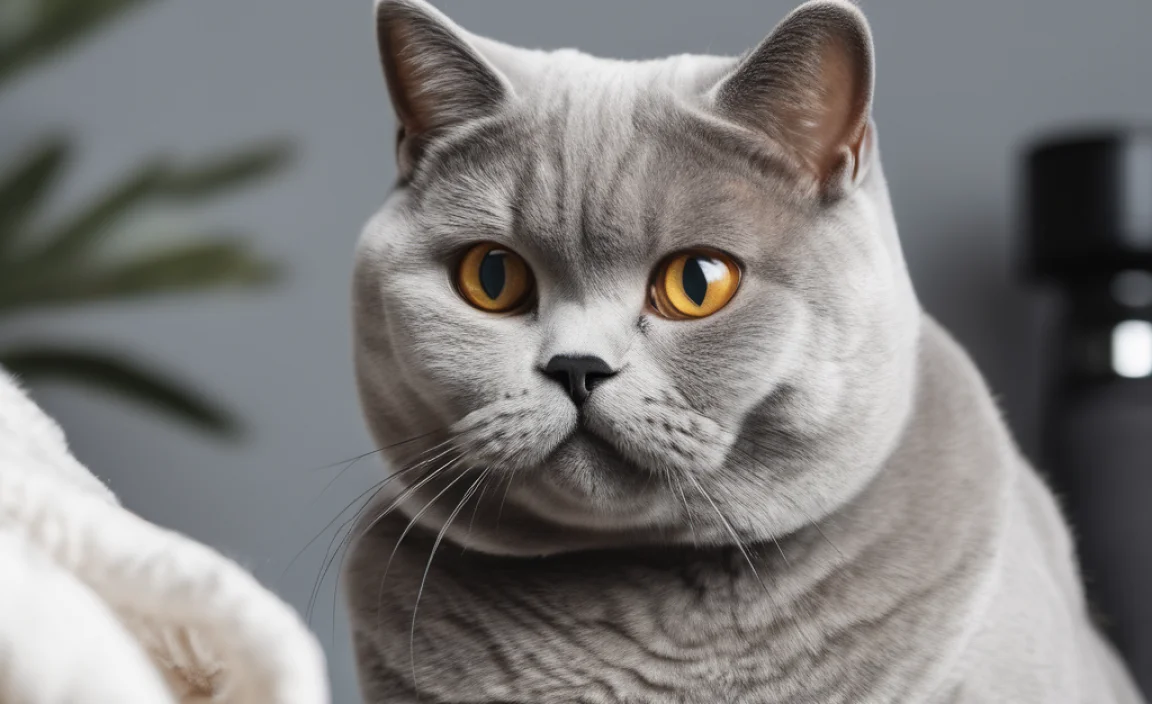
Now that you have your grooming kit assembled, let’s go through a step-by-step guide to grooming your British Shorthair.
Step 1: Create a Calm Environment
Choose a quiet time and place where you and your cat can relax without distractions. Have all your grooming tools within easy reach.
Step 2: Start with Brushing
Use the slicker brush to gently brush your cat’s fur in the direction of hair growth. Start at the head and work your way down to the tail. Pay special attention to areas prone to matting, such as behind the ears, under the legs, and around the tail.
Step 3: Comb Through the Fur
After brushing with the slicker brush, use the metal comb to detangle any knots and remove any remaining loose fur. Again, start at the head and work your way down to the tail. Be gentle and patient, and work out any tangles slowly and carefully.
Step 4: Trim Your Cat’s Nails
Hold your cat’s paw gently and extend one nail at a time. Clip only the tip of the nail, avoiding the quick. If you’re unsure, it’s always best to clip less rather than more. Reward your cat with a treat after each paw to make the experience more positive.
Step 5: Clean Your Cat’s Face
Use a soft, damp cloth to gently wipe your cat’s face, paying special attention to the area around their eyes. Use a separate clean area of the cloth for each eye to prevent the spread of infection.
Step 6: Reward Your Cat
End the grooming session with plenty of praise and a special treat. This will help your cat associate grooming with positive experiences and make it easier to groom them in the future.
Grooming Frequency: How Often to Groom Your British Shorthair
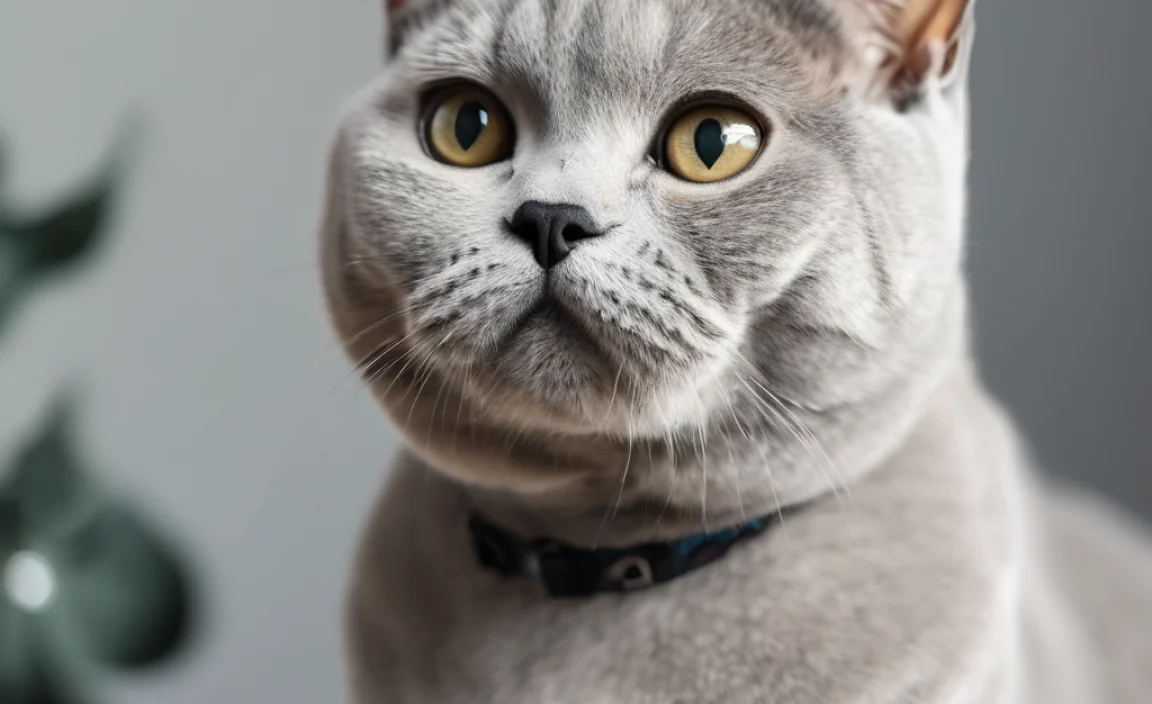
How often you need to groom your British Shorthair depends on their individual coat type and shedding habits. However, as a general guideline, aim to groom them at least 2-3 times per week.
- Regular Brushing (2-3 times per week): Helps to remove loose fur, prevent mats, and keep the coat healthy.
- Nail Trimming (every 2-3 weeks): Prevents overgrown nails and reduces the risk of scratching.
- Bathing (as needed): Only bathe your cat when they are particularly dirty or smelly. Over-bathing can dry out their skin.
Choosing the Right Grooming Tools: What to Look For

With so many grooming tools on the market, it can be difficult to know which ones are right for your British Shorthair. Here are a few things to keep in mind when choosing grooming tools:
- Quality: Invest in high-quality tools that are durable and will last for a long time.
- Comfort: Choose tools that are comfortable for both you and your cat to use. Look for brushes with ergonomic handles and nail clippers that are easy to grip.
- Safety: Make sure the tools are safe for your cat. Avoid brushes with sharp bristles or nail clippers that are difficult to control.
Tips for a Positive Grooming Experience

Grooming doesn’t have to be a stressful experience for you or your cat. Here are a few tips to make grooming a positive and enjoyable bonding experience:
- Start Early: Introduce your cat to grooming as a kitten to help them get used to it.
- Be Gentle: Use a light touch and avoid pulling or tugging on your cat’s fur.
- Be Patient: If your cat is resistant to grooming, don’t force it. Start with short sessions and gradually increase the length of time as your cat becomes more comfortable.
- Use Positive Reinforcement: Reward your cat with praise and treats during and after grooming sessions.
- Make it Fun: Turn grooming into a game by using toys or playing with your cat in between brushing sessions.
Troubleshooting Common Grooming Problems
Even with the best tools and techniques, you may still encounter some grooming challenges. Here are some common problems and how to solve them:
| Problem | Solution |
|---|---|
| Mats | Gently work out the mat with your fingers or a mat splitter. If the mat is too large or tight, you may need to carefully cut it out with scissors (be very careful not to cut your cat’s skin). |
| Tangling | Use a detangling spray and gently comb through the tangled area. Start at the ends of the hair and work your way up to the roots. |
| Scratching or Biting | Stop the grooming session and try again later. You may need to desensitize your cat to grooming by gradually introducing them to the tools and rewarding them for calm behavior. Consider using a calming spray or asking your vet for advice. |
| Fear of Nail Clippers | Start by simply handling your cat’s paws and rewarding them with treats. Gradually introduce the nail clippers, allowing your cat to sniff and investigate them. Clip just one nail at a time, and reward your cat after each clip. |
Recommended Grooming Kits and Tools
Here are a few recommended grooming kits and tools for British Shorthairs:
| Tool | Recommendation | Notes |
|---|---|---|
| Slicker Brush | Safari Self-Cleaning Slicker Brush | Has coated tips to prevent scratching. |
| Metal Comb | Andis Pet Steel Comb | Durable and has both wide and narrow teeth. |
| Nail Clippers | Resco Original Nail Clippers | Classic, reliable scissor-style clippers. |
| De-Shedding Tool | FURminator Undercoat Deshedding Tool for Cats | Effective at removing large amounts of loose fur. Use with caution. |
| Cat Shampoo | Earthbath All Natural Pet Shampoo | Gentle and free of harsh chemicals. |
The Importance of Regular Grooming
Regular grooming is about more than just keeping your British Shorthair looking their best. It’s also essential for their health and well-being. Here’s why:
- Prevents Mats and Tangles: Mats and tangles can be painful and uncomfortable for your cat. Regular brushing helps to prevent them from forming.
- Reduces Shedding: Regular grooming removes loose fur, which reduces shedding around your home.
- Stimulates Blood Circulation: Brushing stimulates blood circulation, which promotes a healthy coat.
- Early Detection of Health Problems: Grooming provides an opportunity to check your cat for any lumps, bumps, or other abnormalities that could be signs of health problems. If you notice anything unusual, consult your veterinarian.
- Strengthens the Bond: Grooming can be a relaxing and enjoyable bonding experience for you and your cat.
FAQ About Grooming British Shorthairs
Here are some frequently asked questions about grooming British Shorthairs:
What is the best brush for a British Shorthair?
A slicker brush is generally considered the best brush for a British Shorthair. Look for one with fine, angled wires and coated tips to avoid scratching your cat’s skin. The Safari Self-Cleaning Slicker Brush is a great option.
How often should I groom my British Shorthair?
Aim to groom your British Shorthair 2-3 times per week. This will help to remove loose fur, prevent mats, and keep their coat healthy.
Do British Shorthairs need baths?
British Shorthairs generally don’t need frequent baths. Only bathe them when they are particularly dirty or smelly. Over-bathing can dry out their skin. When you do bathe them, use a shampoo specifically formulated for cats.
How do I trim my British Shorthair’s nails?
Hold your cat’s paw gently and extend one nail at a time. Clip only the tip of the nail, avoiding the quick. If you’re unsure, it’s always best to clip less rather than more. Reward your cat with a treat after each paw.
My British Shorthair hates being groomed. What can I do?
Start slowly and gradually introduce your cat to grooming. Use positive reinforcement, such as praise and treats, to reward them for calm behavior. Keep grooming sessions short and make them a positive experience.
What if my British Shorthair has mats?
Gently work out the mat with your fingers or a mat splitter. If the mat is too large or tight, you may need to carefully cut it out with scissors (be very careful not to cut your cat’s skin). If you’re not comfortable removing the mat yourself, consult a professional groomer.
Are grooming wipes a substitute for baths?
Grooming wipes are great for quick clean-ups between baths. They’re not a full substitute for a bath, but they can help to remove dirt and odors and keep your cat feeling fresh.
Conclusion
Grooming your British Shorthair doesn’t have to be a chore. With the right tools, techniques, and a little patience, it can be a relaxing and rewarding experience for both of you. By following the tips in this guide, you can keep your British Shorthair looking and feeling their best, while also strengthening the bond between you. Remember to be gentle, patient, and consistent, and always reward your cat for good behavior. Happy grooming!

